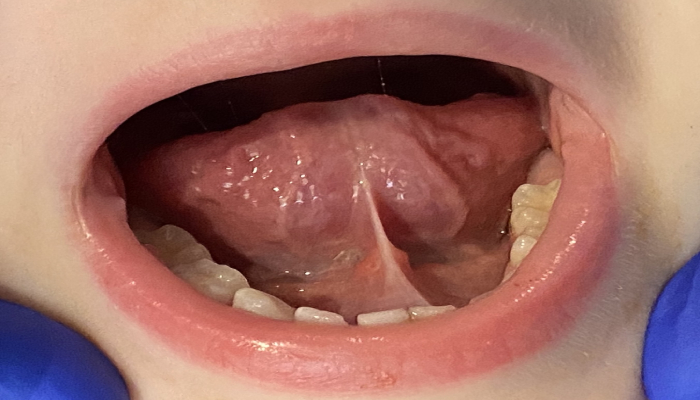What is tongue tie?
Tongue tie, or ankyloglossia, is a condition where the bottom of the tip of the tongue is tethered to the floor of the mouth by a band of tissue. As a result, the movements of the tongue are restricted. Individuals with tongue tie typically are unable to touch the upper incisors with the tip of their tongue, move their tongue from side to side, or protrude the tongue beyond the lower teeth.
How do I know whether my child has tongue tie ?
In most cases, a parent notices the condition when the child does not stick his/her tongue out, or when the tongue appears notched every time the child tries to protrude it. Signs that your child may have a tongue tie are:
In newborns and infants:
1.Difficulty in breast feeding: a tongue tie may be preventing your baby from latching on to the breast. A baby needs to protrude his/her tongue over the lower gums in order to suck. If unable to do so, the baby may chew on the nipple instead of sucking, leading to pain for the mother and inadequate nutrition for the baby.
However, the majority of infants with tongue tie are able to feed normally.
2. Difficulty in swallowing
3. Difficulty in developing certain consonant sounds: when babies begin to babble around 4-6 months of age, they string together consonant and vowel sounds such as “a-ga” or “a-ba”. Their repertoire of consonant sounds increases, and between the age of 12 and 18 months, they form their first words. Babies with tongue tie may not be able to make certain sounds.
Toddlers and older children:
1. Speech difficulties: Delayed or inappropriate speech development is one of the main symptoms that leads to the discovery of tongue-tie. Restricted tongue movement can make it difficult to pronounce sounds such as “t”,”d”, “z”, “s”, “th”, “r”, and “l”.
2. Oral hygiene and dentition problems: Difficulty in removing food debris from the teeth or palate can lead to cavities and gingivitis. Continuous pressure on the lower teeth can lead to formation of a gap between the lower incisors.
3. Difficulty with licking ( an ice cream cone or such), difficulty protruding the tongue.
4. Psychosocial impact
What do I need to do if my child has tongue tie?
The treatment for tongue tie is a short surgery that involves cutting the band that tethers the tongue. In adults and older children, the procedure can be done with local anaesthesia, but infants, toddlers and younger children require general anaesthesia. Rarely, a more extensive procedure called a frenuloplasty may be required. If detected early, it is preferable to perform the procedure at about 6 months of age, which is the time that the child is developing the ability to pronounce different consonant sounds. The surgery needs be done in a younger infant if the condition interferes with feeding. A child may still require speech therapy after surgery to help develop normal speech. This is especially true in cases where the condition has come to light after language has already developed.
There is minimal wound care required after a simple tongue tie release. Good oral hygiene is usually all that is required


